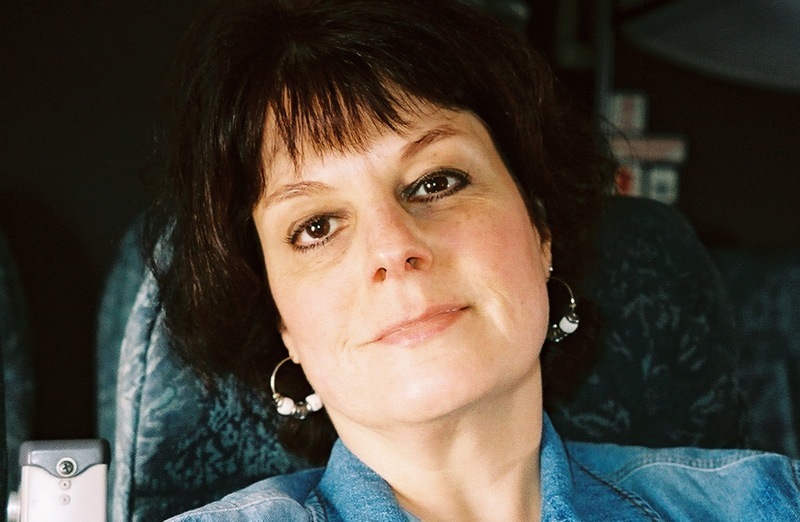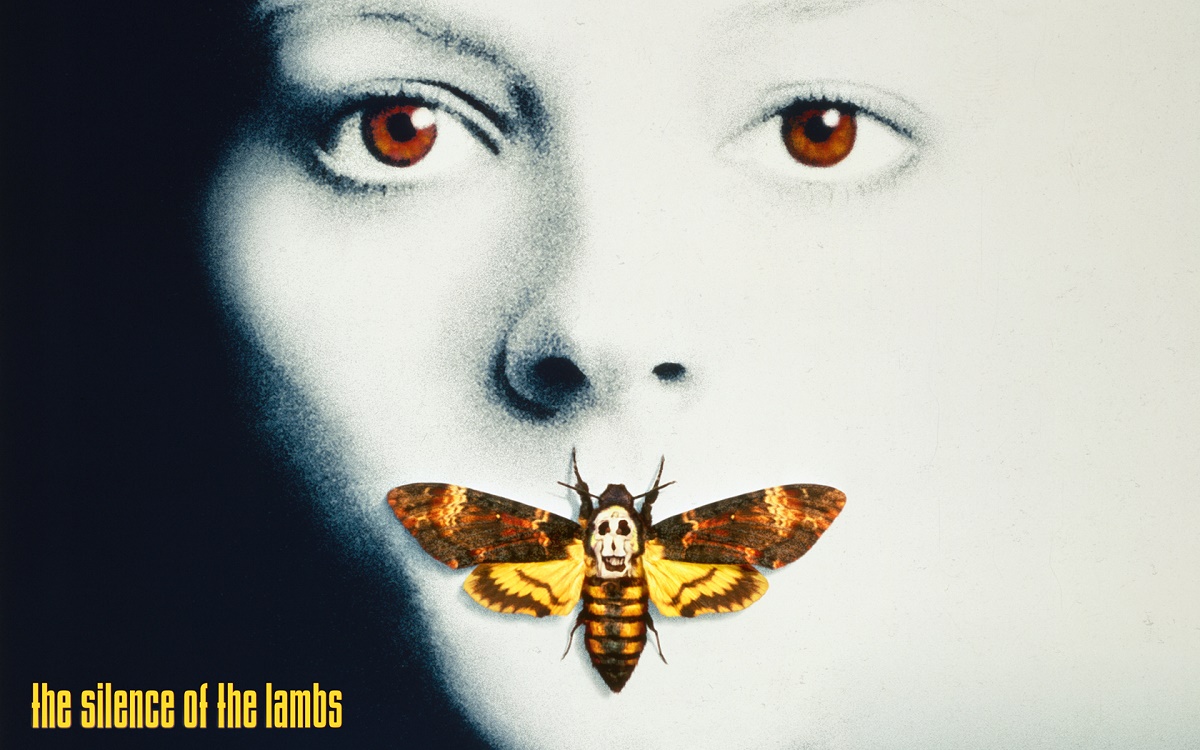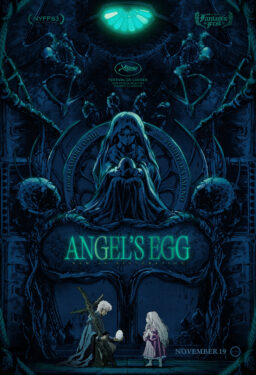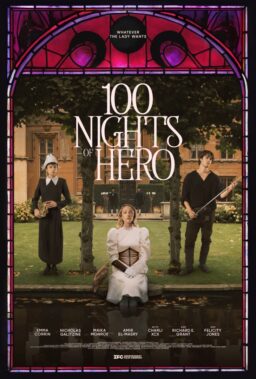While comic-book avengers and YA dystopian heroes seem to dominate the rest of the movie year these days, Oscar routinely likes to get serious when selecting what films compete for and are eventually crowned Best Picture of the year. Drama, biopics, historical epics, battlefield re-creations and topical tales that reflect the headlines of the day are regularly invited to the ball.
Meanwhile, comedy and musicals are hardly ever recognized, and, at least since the golden age of tune-filled entertainment basically ended after “Oliver!” in 1968, rarely win. In the early 2000s, the three-year invasion of the hobbits known as “The Lord of the Rings” trilogy took some of the stigma off the fantasy genre for a while. And ever since the Academy expanded the number of films competing in its top category in 2009, more sci-fi titles have found themselves making the lineup, including “Avatar,” “District 9,” and this year’s “The Martian.”
But for some reason, voters seem afraid of horror films. Despite being a Hollywood staple since the silent era when Nosferatu and Dr. Caligari stalked the silver screen, superior spine-tinglers rarely get much respect during awards season.
Which is just one of many reasons why “The Silence of the Lambs”—the 1991 box-office sensation that celebrates the 25th anniversary of its release this week—is such an amazing anomaly in the Oscar record books as the lone scary movie to win Best Picture. Yes, “The Exorcist” from 1973 was the first true fright flick to sneak into the most-coveted category as well as make a considerable dent on the ballot with nine other nominations, but it lost Best Picture to “The Sting.”
The demonically-possessed entry would score only two wins—Adapted Screenplay and Sound Mixing. “Lambs,” however, would go on to be just the third film after 1934’s “It Happened One Night” and 1975’s “One Flew Over the Cuckoo’s Nest” to reign supreme in the top five major categories. In addition to Best Picture, it snagged trophies for Director (Jonathan Demme), Lead Actor (Anthony Hopkins), Lead Actress (Jodie Foster) and Adapted Screenplay (Ted Tally).
No other contender has claimed all five prizes since.
The question, of course, is why this movie about a young female FBI trainee whose stamina and smarts are put to the test by her father-figure mentor, the seductively twisted psychiatrist and the murderous madman who is attacking innocent young women?
Just what made “Lambs” such a standout achievement that it overcame any prejudices held against disturbing storylines, especially one that is built around such unsavory elements as crazed serial killers, terrifying encounters in the dark, graphic language, flashes of nudity and mutilation, mostly off-screen violence and cannibalism—a predilection of Hopkins’ brilliant yet deranged doc Hannibal Lecter.
“Lambs” also had a couple other strikes against it. For one, it could have been dismissively categorized as a sequel. The title was preceded by another creepy chiller, 1986’s “Manhunter,” which was also based on a novel by Thomas Harris (“Red Dragon”) and featured the character of Lecter (played by Brian Cox). Only six official sequels have been nominated for Best Picture: “The Bells of St. Mary’s,” which followed “Going My Way”; the second and third helpings of “The Godfather”; “Toy Story 3“; and “The Lord of the Ring’s” second and third chapters, “The Two Towers” and “The Return of the King.”
But “Manhunter”—which shared none of the same talent as “Lambs”—under-performed at the box office, grossing less than $9 million during its original release. Few people actually saw it or even knew of its existence until the success of “Lambs” helped to give it a second life.
Another potential roadblock: “The Silence of the Lambs” opened more than a year before the actual Oscar ceremony was held on March 30, 1992. Anyone who knows about awards campaigns realizes how hard it is to keep a film that opens in the early months of the year from being forgotten. Considering that its distributor, Orion, was going through bankruptcy at the time made matters even more difficult. But the company, which managed to come up with $200,000 to promote “The Silence of the Lambs” as a contender, had previous experience working magic with 1990’s “Dances With Wolves,” a rare Western that lassoed the Best Picture trophy and revived the genre on the big screen.
There was one key benefit to its release date, however. Back when promotional screeners were still somewhat of a novelty, “Lambs” was first film that was widely available on home video during awards season that would go on to win Best Picture.
But much like “Gone With the Wind,” which dominated the 1939 Oscars, “Lambs” wasn’t just a mere movie but a cultural phenomenon based on a best-seller that haunted the ticket-buying public’s imagination—and that of Academy members as well. No surprise that Billy Crystal memorably kicked off his third stint as host of the Oscar show by donning a face muzzle while being rolled out onto the stage by two men in orderly uniforms, Hannibal-style.
Arlene Ludwig, a publicist who worked for Disney for more than 50 years and has been an Oscar voter since 1980, says that few of her peers at the time considered “The Silence of the Lambs”—which would go on to gross $130 million domestically on a $19 million budget—as simply a horror movie. “It had such brilliant filmmaking, a terrific script and great acting,” she says. “It felt so new and different. It had an intensity that just captured everyone. People were talking about it all year long. It takes a hell of a movie to get that kind of dialogue going.”
In the end, Ludwig voted with her heart and checked off “Beauty and the Beast” on her ballot. But, she says, “While you always hope for surprises, I knew deep down that “The Silence of the Lambs” would win.”
Still, much like the outpouring of criticism over the lack of diversity among the acting nominees on this year’s ballot, “Lambs” was criticized by the LBGT community for its depiction of its main villain, serial killer “Buffalo Bill” aka Jame Gumb (played by Ted Levine, Tony Shalhoub’s boss on TV’s “Monk”), who had a connection to one of Lecter’s male patients who was slain. While it is eventually learned that Gumb is trying to transform himself into a woman by creating a costume out of the skin of his female victims, Lecter tells Clarice that his actions don’t classify him as a “transsexual,” observing that “his pathology is a thousand times more savage and more terrifying.”
But the Gay and Lesbian Alliance Against Defamation declared that “The Silence of the Lambs” presented a “negative stereotypical image of gay people as villains, with extreme violence against women.” Demme countered at the time that it was important that the main killer in the movie not be seen as gay. “That would be a complete betrayal of the themes of the movie. And a disservice to gay people.” He also would later note that part of the problem was that “there is a tremendous absence of positive gay characters in movies.”
Demme’s decision to next direct 1993’s “Philadelphia,” one of the first mainstream Hollywood films to tackle the AIDS crisis, might have been partly his response to such reactions to “The Silence of the Lambs.”
Ultimately, “Lambs” had the right stuff to beat out its competitors—“Beauty and the Beast” (the first animated feature to compete for Best Picture), mobster bio “Bugsy”, a what-if political thriller “JFK” and romantic drama “The Prince of Tides.”
The clues to what that “stuff” is can be best located in the very five categories won by “The Silence of the Lambs.”

PICTURE
How many Best Picture winners set in what was the present day actually feel timeless? Many feel stuck in the year they were released, including “Kramer vs. Kramer” and “Rain Man.” There are cultural references, clothing and hair cues and issues at hand—child custody battles, autism—that are viewed in a different light these days. Not that it ruins the experience of viewing them again, but somehow they feel more like time capsules.
But having re-watched “Lambs” again recently, it feels remarkably ageless and fresh. That is partly because it exists in its own universe, where the most notable cultural signposts relate to classical architecture and music. The clothing styles and haircuts reveal little. Even Bon Appetit magazine, Tom Petty and the Heartbreakers and the perfume L’Air du Temps are still in existence.
Of course, of greater importance is that even if you know what awaits in the next scene—that Clarice will happen upon a man’s severed head smeared with makeup in the back seat of a 1931 Packard while searching a dark storage shed (a precursor perhaps to “Storage Wars”), Lecter will pull a fast one when he escapes from his temporary Baltimore holding pen, Buffalo Bill will don those unsettling night vision goggles in his dungeon-like basement—it still gets under your skin and makes you uneasy.
And while women’s rights advocates such as Betty Friedan took exception to the lurid premise of female victims being skinned alive (based on the real-life crimes of Ed Gein, who also was an inspiration for “Psycho”), a closer viewing will reveal it is probably one of the most feminist-forward-thinking horror movies ever made. Clarice is constantly confronted by men who either leer at her, dismiss her or underestimate her abilities. Even her FBI mentor, Jack Crawford (Scott Glenn), is using her as bait to get information about the killer. About the only male who doesn’t act this way is Lecter. In the end, both she and Brooke Smith’s feisty captive Catherine Martin manage to foil Buffalo Bill and rescue themselves.

DIRECTOR
One of the reasons that “Manhunter” didn’t quite click was because director Michael Mann, high off his TV hit “Miami Vice,” tried to apply the show’s slick tropical-hued aesthetic to a horror movie. It didn’t quite work. Demme, however, was a star graduate of the Roger Corman school of exploitation movies. He was not afraid of grit, grunge and gruesome situations, not after doing the B-film likes of “Caged Heat” and “Crazy Mama.” Corman even has a cameo in “Lambs” as the director of the FBI.
Demme also is a humanist who supports quite a few worthy causes and has a knack for bringing out the best in his leading ladies (Mary Steenburgen in 1980’s “Melvin and Howard,” Melanie Griffith in 1986’s “Something Wild,” Michelle Pfeiffer in 1988’s “Married to the Mob”). As a result, he was the perfect filmmaker to do justice to the film’s bizarre criminals and nasty acts of violence as well as build sympathy both for the victims and especially our hero, Clarice.
Observed screenwriter Ted Tally when he spoke to me for a USA TODAY story back in 1991, “Demme is a gentle, sweet man. The reason why this film is so scary is because these things are scary and terrible to him. He gives the victims a sad dignity. Death is as real, pitiful and upsetting as in real life.”
The likes of 1974’s “The Texas Chainsaw Massacre” and 1978’s “Halloween” might have given birth to an outpouring of similar slasher films. But “The Silence of the Lambs” embued this horror subgenre that relies on the everyday world rather supernatural forces to shock and scare with artistic credibility. After that, the “Scream” franchise had it both ways by adding self-aware irony into the suspense mix.

ACTOR
It’s hard to believe that Demme initially considered Sean Connery as Lecter. In fact, it is impossible now to not imagine Hopkins as the highly cultured and well-mannered flesh-eating fiend, especially with that indelible delivery of his most memorable line: “A census taker once tried to test me. I ate his liver with some fava beans and a nice Chianti”—followed by that hiss-like slurping.
Just like Clarice, the audience is also won over by his blunt talk, keen insight into human nature and use of wordplay while providing hints about her case. But the main reason Hannibal is so wickedly appealing is that, unlike most of the men she encounters, Hannibal never treats her as a subordinate but as an equal while showing her admiration, caring and respect—even if his intentions aren’t always on the up and up. The fact that Hopkins’ portrayal of the diabolical mass murderer is No. 1 on the American Film Institute’s list of favorite film villains says it all.
The role would take Hopkins, who was better known for his stage work back then and was more of a character actor on screen, to the next level of worldwide fame where he continues to exist to this day. Sorry Mads Mikkelsen, who played the title role on the “Hannibal” TV show for three seasons. But just as Bela Lugosi could not stop being Dracula, Hopkins will forever be Hannibal Lecter.

ACTRESS
Demme’s first choice for Clarice was Michelle Pfeiffer, who turned him down because she felt the material was too dark. But Foster, who tried to buy the rights to the book but was beat out by actor Gene Hackmanwho wanted to direct and possibly act in the film version at one time—was determined to get the part. And Demme has said it was that sense of purpose and strength that convinced him she was the one. Good thing, too, since—as is the case with Hopkins—it is hard to think of Clarice without seeing Foster (which was just one problem when Julianne Moore took over the role in the 2001 sequel “Hannibal”).
Several elements of Foster’s background invested her performance with a built-in sympathy factor and rooting interest for the audience. For one, she was in her late 20s and still retained a certain girlishness in her demeanor, unlike Pfeiffer who turned 33 in 1991. She also hadn’t appeared in a major film (a 1990 release, “Catchfire,” directed by Dennis Hopper, came and went quickly) since winning her first Oscar as a rape victim in 1988’s “The Accused.” And not only was she a former child star who grew up on camera in such films as 1976’s “Taxi Driver” and “Freaky Friday,” she carried her own sense of vulnerability after being unwittingly tied to real-life assassin John Hinckley after his attempt to kill President Reagan in 1981.
ADAPTED SCREENPLAY
Tally was attached to the project based on Harris’ 1988 best-seller back when Hackman was involved and before Demme, Hopkins and Foster came on board. He was encouraged to keep on writing by Orion president Mike Medavoy even after the company had to pull the plug on financing for a while. For one thing, he was in possession of one of the greatest incentives that a screenwriter can have: He had Harris’ blessing and complete trust—a rarity when the author is still alive.
“This is no means a conventional thriller,” Tally said in our interview. “There’s a lot of showing two people sitting and talking 5 feet apart. So many thrillers create tension with car chases. Or the heroine is in physical jeopardy through much of the film. That doesn’t happen.”
Tally’s adaptation also pulled off the difficult feat of actually pleasing fans of the book. Even if events, characters and motivations were compressed out of necessity, Tally gave credit to Demme for being able to maintain the integrity of the story: “He knows how to make what is left out reverberate on screen.”
You can blame “The Silence of the Lambs” for creating a growth industry for TV series such as the many variations of “CSI” and other crime-related procedurals heavy on forensics and FBI profiling. But as far as Oscar is concerned, it remains one of a kind.












